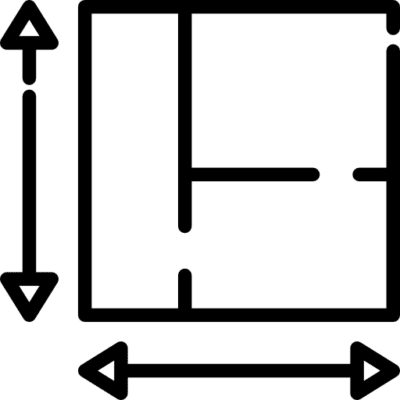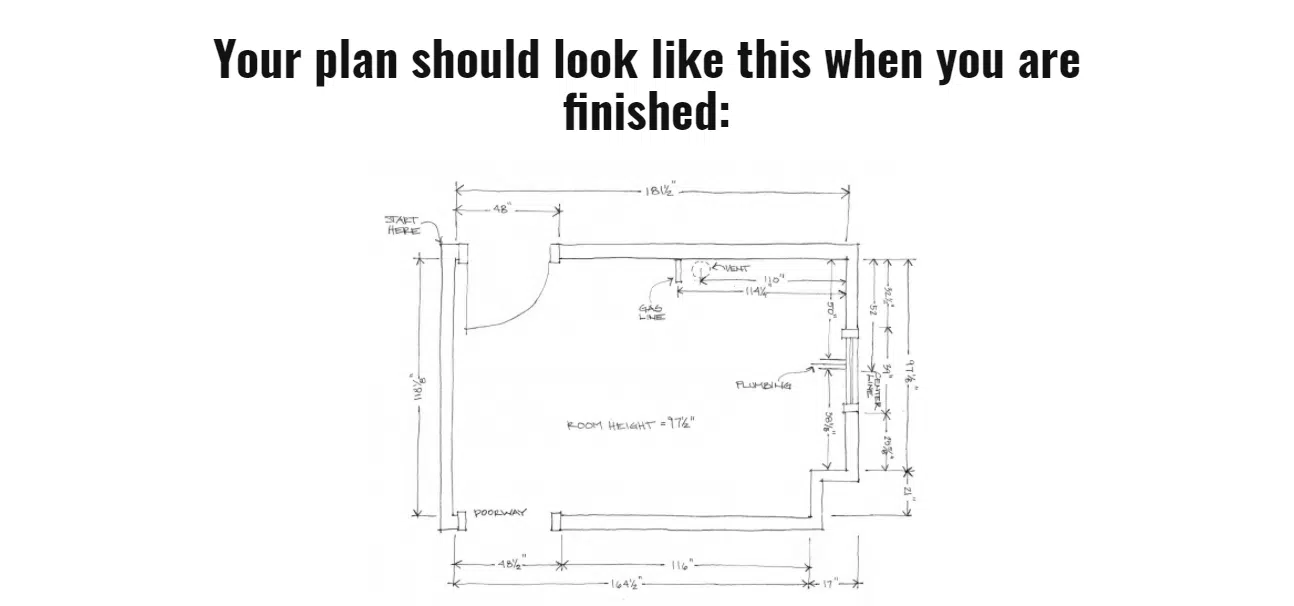MEASURE
TIPS BEFORE YOU START
- Start with the first wall on the left and work to your right.
- Round off each measurement to the nearest 1/8″.
- Measure everything twice.
- STEP 1
Make a rough drawing of the shape of the room as a floor plan. Represent each wall, door, window and any protrusions or recessed areas. - STEP 2
Starting from a corner of the room, measure the overall length of each wall in your kitchen from the top (Measurement “A” in the image above). - STEP 3
Measure each door and all windows (Measurement “B”). Indicate direction of door swing. NOTE: Doors and windows are measured from outside edge to outside edge of casing or trim. - STEP 4
Measure exact locations of permanent appliances, radiators, pipes, sink plumbing, air vents, offsets etc. that you either cannot move or do not want to move. Shown as example measurement “B” in the image above. - STEP 5
Measure the center line of the plumbing and ducting shown as example “C” in the image above. - STEP 6
Measure the distance from the floor to the ceiling and write it in the center of your drawing. - STEP 7
Compare measurement “A” against the total of measurement “B” they should match.
LAYOUT TIPS

1. Room Dimension
Create room dimensions in planner. save your design periodically!

2. Anchors
Add anchors such as sink base, appliances, doors and windows.

3. Add Corner Cabinets
Add corner cabinets to know what space you have left.

4. Add Lowers and Talls Cabinets
Once you have anchors and corner cabinets in add other lower and tall cabinets to fill in space.

5. Add Uppers Cabinets
Now that you have your base cabinets and anchors in place, add your wall cabinets. design tip-you can stack cabinets with our planner!

6. Add Panels and Moldings
Now that everything is in place. add side panels to all your exposed ends on your base, wall and tall cabinets. don’t forget refrigerator sides and cabinets surrounding the hood. double check that you’ve added crown and light rail if your design calls for it.
Popular kitchen design styles include modern, traditional, farmhouse, coastal, and industrial. Each style has its own unique features and can be customized to suit individual tastes.
Important factors to consider when designing a kitchen include the size and layout of the space, the homeowner’s cooking and entertaining needs, the budget, and the desired style and aesthetic. Other factors to consider may include lighting, ventilation, storage, and safety.
Some common kitchen layout options include L-shaped, U-shaped, galley, and open-plan designs. Each layout has its own advantages and disadvantages, depending on the size and shape of the kitchen, as well as the homeowner’s preferences.




